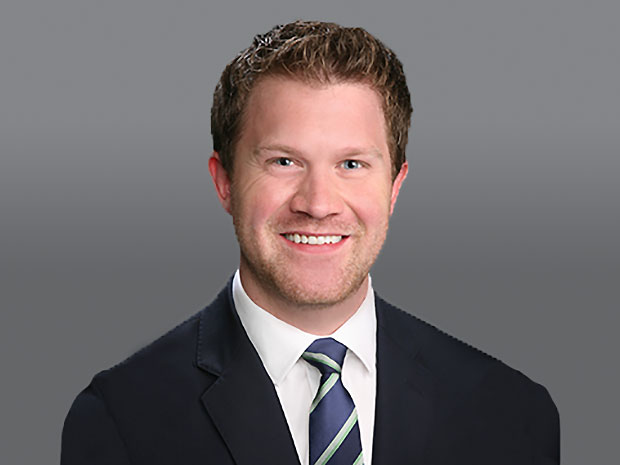The SBA PPP loan forgiveness application, which contains four parts (three required and one optional) is now available to borrowers. Borrowers are to submit the application to their lender and the application may also be complete electronically though the lending institution. Through the application, the SBA has also clarified much of the existing uncertainty surrounding the measurement of qualified costs.
Specifically, the guidance provides the following:
Important dates
The guidance confirms the eight week (56 day) covered period begins on the date of disbursement. If a borrower received more than one disbursement, the period begins on the date of the first disbursement. For payroll costs, the SBA provides an administrative choice of covered period to allow better alignment with pay periods. However, for eligible non-payroll costs the borrower must use the eight-week period beginning on the date of disbursement.
To calculate the FTE reduction mitigation provisions, the application requires the borrower’s total FTE as of June 30, 2020. For some borrowers the June 30 date may be after the eight week period and for others it may be during the eight week period.
For purposes of the salary and wage reduction, the application instructs borrowers to use the testing period of Jan. 1, 2020 to Mar. 31, 2020.
Order of operations
In a borrower favorable decision, the application provides the ordering rules for borrowers to compute the loan forgiveness amount. A borrower is to (1) take the sum of qualified costs, (2) adjust for the salary/hourly wage reduction, (3) apply the FTE reduction ratio, (4) compare the modified total to the PPP loan amount, and (5) determine the maximum loan forgiveness based on the SBA requirement that at least 75% of the loan forgiveness amount must be attributable to payroll costs.
Payroll costs
Most importantly the loan forgiveness application allows an eligible borrower to elect an ‘alternative payroll covered period.’ This alternative payroll period allows an eligible borrower to align the eight-week period to the first day of its first pay period following the PPP loan disbursement date. This alternative is in line with the AICPA recommendation that RSM and many others supported. To be eligible for this alternative payroll period a borrower must have a biweekly or more frequent payroll schedule and if the alternative method is elected, a borrower must use the alternative method wherever it is referenced in the loan forgiveness application. The application provides an example of the alternative method in practice:
“For example, if the Borrower received its PPP loan proceeds on Monday, April 20, and the first day of its first pay period following its PPP loan disbursement is Sunday, April 26, the first day of the Alternative Payroll Covered Period is April 26 and the last day of the Alternative Payroll Covered Period is Saturday, June 20.”
In another important clarification payroll costs can be both paid and incurred during eight-week covered period or alternative covered period. Payroll costs incurred can be included in the elected covered period if the amounts are earned during the elected covered period and paid on or before the next regular payroll date.
Non-payroll eligible costs
Unlike payroll costs, a borrower cannot elect the alternative measurement date for purposes of non-payroll costs. Amounts for eligible non-payroll costs can be paid or incurred during the covered period, but cannot exceed 25% of the total forgiveness amount. Eligible non-payroll costs include (1) covered mortgage obligations, (2) covered rent obligations and (3) covered utility payments.
In additional favorable guidance, the application provides that a borrower’s non-payroll costs allow for both payments and amounts incurred for both real and personal property related to mortgage interest and rent. If the billing date is after the end of the covered period, the amount must be paid on or before that next billing date to be eligible. To be qualified the agreements must be in force before to Feb. 15, 2020.
Measuring FTEs and FTE reduction
The application provides clarity on how borrowers are to measure full-time equivalents (FTEs). To compute the FTEs a borrower is to take the number of hours paid per week, divide by 40, and round the total to the nearest tenth. However, while not unexpected, but not as favorable to borrowers, an employee can only count as a maximum of 1.0. In a simplification convention a borrower can assign an FTE of 1.0 to an employee that works 40 hours or more per week and an FTE of 0.5 to an employee that works fewer than 40 hours more per week.
As many are aware, the loan forgiveness amount is to be reduced for reductions in FTEs. To compute the reduction a borrower is to use the total average weekly FTEs during the reference period of its choosing (either Feb. 15, 2019 to June 30, 2019 or Jan. 1, 2020 to Feb. 29, 2020 for most borrowers – note seasonal employers are to use a different period). This testing period is compared to the average weekly FTEs during the elected covered period. Borrowers must use the same FTE computation methodology for both periods.
The PPP provides that a reduction in FTEs between Feb. 15, 2020 and Apr. 26, 2020 can be mitigated if a borrower restores the FTE level to the FTE level in the borrower’s pay period that includes Feb. 15, 2020 not later than June 30, 2020. The application requires a borrower to provide the FTEs as of June 30, 2020, so more guidance is needed as to whether a borrower must retain workers through the pay period that includes June 30, 2020 if the eight week period ends prior to such date.
Many borrowers may be having difficulty in restoring their workforce due to unemployment insurance benefits or employees having found other jobs. In addition, during the elected covered period, a borrower may need to terminate an employee for cause, or an employee may leave voluntarily. The SBA provides that a borrower will not have its loan forgiveness reduced for any positions for which the borrower made a good-faith, written-offer to rehire an employee during the elected covered period and the employee rejects such offer. Also if any employee is fired for cause, voluntarily resigns or voluntarily requested and received a reduction of their hours, the borrower’s loan forgiveness amount is not reduced. Borrowers are to only list the FTE reduction exceptions if the position was not filled by a new employee.
Measuring salary/hourly reduction
Another potential reduction in the loan forgiveness amount is the reduction for a decrease in salary or hourly wages. The loan forgiveness application instructs a borrower to use the average annual salary or hourly wage during the elected covered payroll period and compare that to the average salary or hourly wage between Jan. 1, 2020 and Mar. 31, 2020. This analysis is done on an employee by employee basis and we welcome the change to the average versus the total wages being compared between the two periods.
A salary or wage reduction between Feb. 15, 2020 and Apr. 26, 2020 can be mitigated if the reduction in salary or wage is eliminated not later than June 30, 2020. Again, the application requires the average annual salary or wage as of June 30, 2020 so additional guidance is needed for those borrowers whose eight-week period ends prior to such date.
There are two important exclusions that borrowers should be aware of in computing the salary or hourly wage reduction. First, any employee who received compensation at an annualized rate of pay of more than $100,000 for any pay period during 2019 is excluded from this analysis. Second, based on the loan forgiveness application, a borrower needs to only include employees that were employed during the elected covered period (i.e., a salary or wage reduction due to an employee leaving during Q1 2020 will not harm the borrower).
Overall
Overall, the loan forgiveness application is helpful for all borrowers under the PPP. As a practical consideration, the application is necessary for borrowers to obtain forgiveness but also provides much needed clarity for a manner of borrower situations. However, not all outstanding questions have been answered and borrowers should consult with their advisors on modeling out and maximizing loan forgiveness in light of the additional guidance and guidance still necessary.



